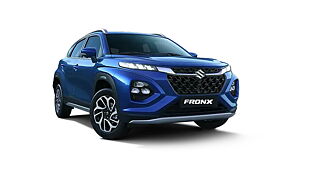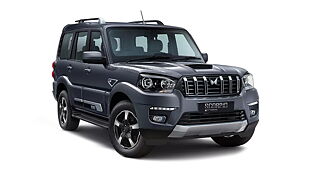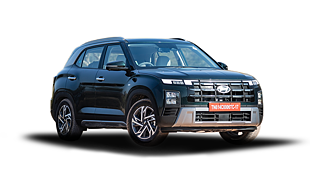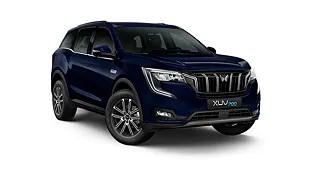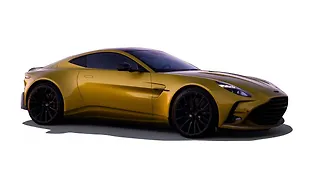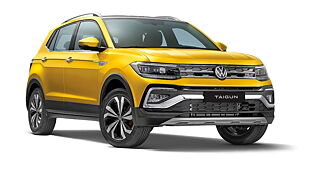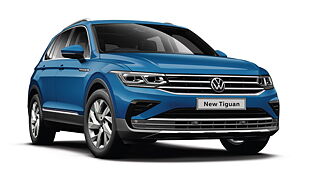Introduction

The Polo hatchback, launched earlier this year, was Volkswagen’s first serious foray into the Indian market and saw a lot of investment being brought in by this very serious German carmaker to set up a state of the art manufacturing facility at Chakan in Maharashtra. But their seriousness to succeed in the Indian marketplace is even more evident now with the introduction of the Vento, which in simple words, is a Polo with a boot. They’ve engineered the Vento to be ‘best in class’ and have started with possibly their most successful platform – the Polo (apart from the Golf of course!). The Polo has sold over 11million units since 1975 and is a significant platform for VW. And this isn’t the first time the Vento name (which translates to wind in Italian) is being used for a VW car.

The first Vento was a car made by Volkswagen from 1992 through 1998 and was actually the European version of the third-generation Volkswagen Jetta. We’ve just come back from a ‘preview’ drive of the new Vento organized by Volkswagen India Ltd. for the automotive journalists fraternity and have come away with a fairly decent first-hand feel of the car. The Volkswagen Vento will be launched in a total of five variants; three petrol and two diesel. These will be the Trendline Petrol, Highline Petrol, Highline Petrol Automatic whilst the oil-burner’s will be the Trendline Diesel and Highline Diesel. Only the petrol engine in Highline trim gets a six-speed automatic transmission option.

Design & Styling

The Vento, much like its hatchback sibling – Polo, is certainly a very handsome looking car and unmistakably a VW. In fact it now almost looks like a scaled down all-new Jetta which is on its way to our shores next year. The Vento is a rather sophisticated and mature looking sedan and has just that right balance of lines and proportion giving it an almost timeless look. It’s a design that will age gracefully and won’t look out of place even a good five years down the road, which means that it can look fresh just with a minor facelift and will enable the Vento to have a longer product life-cycle. The Vento is 414mm longer than the Polo and 17mm wider than its hatchback sibling. In terms of overall size it’s closest to the Ford Fiesta and a shade shorter in length than its stiffest competitor –the Honda City. (See comparison table below). It’s also very similar on the wheelbase measurements to the City but the Linea and the Logan (from a segment lower) beat the Vento on this. However, what must be pointed out is that the Vento’s interior is packaged smartly to maximize space inside as efficiently as possible.

The Vento (just like the Polo) has a very aggressively chiselled front end, with smart headlamps (again shared with the Polo) which really sweep from around the front fenders to merge with the slim grille. The big shiny VW badge sits in the centre of the grille and the two chromed horizontal slats do add a bit of sparkle to the front of the car. Also adding to the sharp looking front are new circular fog lamps with chrome bezels inset in the front bumper, which are standard on the loaded Highline variant. The Highline trim also gets a chrome highlight on the air intake below the bumper. So visually, you’ll be able to tell a Vento in your rear-view mirror (assuming it’s a Highline!). When we drove the Polo earlier this year, we had wished that VW retained the double-barrel design of the European Polo headlamps which would make for a better night driving experience on the highway. And after using a Polo for the last couple of months, we do believe that the Polo and now the Vento need better headlights (intensity and throw). The Vento with its very usable and tastefully integrated 480litre boot, which will no doubt be used for intercity trips as well as driving holidays, might just see a lot more highway use and better lights would make for a better and safer night-time driving experience in inclement weather. The boot also has a fairly low and comfortable loading height making it easier to haul heavier suitcases in. A point to note here, is that the Vento doesn’t have split rear seats or even a full fold type.

The rear tail lamps follow a slightly Polo derived theme and as well. The Trendline trim gets reverse lights in both the tail lamp units. However the Highline variants have a reverse lamp on the left side unit and a rear fog light on the driver’s side tail lamp cluster. The Highline variants get a nice chrome strip at the bottom of the bootlid which adds just the right amount of sparkle to the rear. The side-view mirrors are the same as those on the Polo. The Trendline variants get black mirrors and door handles whilst the Highline variants get body coloured mirrors and door handles apart from the superlative seven-spoke 15” alloys that come shod with decently sized 185/60 R15 rubber. The base variant, the Trendline, comes with 14” steel wheels with wheel covers and sport 175/70 R14 tyres. The spare (even on the Highline which has alloys) is a regular 14” steel wheel shod with a 175/70 tyre. The diesel powered Vento carries a TDI badge on the rear and that’s the only giveaway to what’s under the hood. The Trendline variant is available only in solid colours, in what Volkswagen calls, Candy White and Flash Red. In addition to these two colours, the Highline is available in three metallic shades; Terra Beige, Shadow Blue and Reflex Silver. There’s also the option of a Deep Black which is a Pearl effect paint for the Highline.

Interiors & Features

The Vento will be available in two trim levels, namely the Trendline and Highline. Common across all the variants is the brown/beige interior with the ‘Livon’ beige fabric upholstery, power steering with tilt and telescopic adjustment, central locking, front armrest, defogger, power windows for all windows, rear air-con vents, body coloured bumpers, tachometer, height-adjustable front seatbelts, dust & pollen filter for the air-con, engine immobilizer, chrome finished door handles on the inside, prismatic rear-view mirror, tinted glasses and height adjustable headrests for the front and rear. The fully loaded Highline, much as its name suggests, is the top-of-the-line variant. So it gets those delicious seven spoke alloys, chrome accents on the inside and outside, body coloured sideview mirrors & door handles, ABS, driver & passenger airbags, front & rear fog lamps, keyless entry (with remote opening & closing of windows), and audio kit which has an CD/MP3/WMA disc player & tuner with a four speaker setup and a multi function display with a door ajar warning. The Highline also sports Climatronic (fully automatic air-con), a height adjustable driver’s seat, a full trip computer, leather-wrapped steering wheel, electrically adjustable side-view mirrors, one-touch up/down operation for all four anti-pinch power windows, a rear center armrest and a handy lever on the rear of the front passenger seat, that slides the seat forward in a jiffy. 
The interior of the Vento is by and large a two-tone affair with sprinklings of black thrown in for good measure. You’ve got the top half of the dashboard in a durable (but hard) dark-brown plastic, and the bottom is beige and merges seamlessly with the doorpad design. The beige interior does make the car feel far more airy on the inside than a grey one might, but as we’ve always believed it is going to need constant attention to keep it looking spotless. The chrome finished door release handle adds a slightly upmarket touch to the doorpad area. We loved the position of the central locking control on the driver’s side door and the way it lights up even in really bright sunlight. The door pockets are large enough to hold one litre water bottles and there’s plenty of storage space for knick knacks. The Vento gets a slightly redesigned cupholders in center console area over what’s available in the Polo. The glove-box is also fairly well sized and will swallow a fair bit of all the odds and ends you’d want to carry around. The Trendline variants also don’t come with seatback pockets whilst the Highline does. Thankfully both variants sport vanity mirrors on the front passenger side sun-visor. Other subtle differences between the Trendline and the Highline are the interior map-light units. The Trendline has a simpler looking single light unit, where as the Highline comes with a three-lamp unit which also houses sensors for interior surveillance. Both trim levels come with a centrally mounted rear roof light as well. The Trendline also comes with power window controls for the front only, and the driver doesn’t have controls for the rear power windows. On the Highline the driver has control to all windows in the car.
One thing that Volkswagen India has really got spot on is the quality of the interior plastics as well as the fit and finish. Little quality bits can really go a long way in giving a car a well-made, quality feel and the Vento interior feels well screwed together, just as well as the robust bodyshell. The steering wheel is a three spoke affair across the variants and feels good to hold, as does the short, stubby shifter which also feels quite sporty. The loud dual-tone horn, (which sounds typically German) is quite a boon for wandering cattle or house-pets on the open highway. The Trendline steering wheel (without the Airbag) has the horn pad all the way to the edge of the steering rim and is easier to use than the steering wheel on the Highline (with the Airbag). This one has the horn pads towards the center of the steering wheel. The one thing we did sorely miss (as also on the Polo) is the lack of a dead pedal.

One area that Volkswagen has paid extra attention to – is space in the rear. The longer wheelbase (over the Polo hatchback) has liberated plenty more space at the rear. There’s sufficient rear headroom for tall six-footers and there’s enough legroom at the rear for tall occupants at the rear – even if you’ve got tall front occupants. The adjustable headrests are quite comfortable for that short nap in the backseat. The rear is best for two large occupants and can easily pack in three. However, the passenger in the centre will have to reckon with the fairly high center tunnel. The air-conditioning is something that VW has tweaked further for the Indian market and the car interior does cool down quite quickly. The blower is fairly powerful and provides a fair blast of cool air to the rear of the car and with the additional rear air-con vents which are adjustable for up/down & left/right, the passengers will be quite comfortable at the rear.
The instrument cluster is identical to the Polo and sports two large dials which flank a digital display in the centre. The left dial is the tachometer and the right dial for speed. The display has a graphic fuel level indicator, odometer, trip meter, clock, ambient temperature readout and also a service indicator. The headlamp knob is on the right hand side of the steering, mounted on the dash in typical European style. The left stalk controls the indicators and the headlamp beam and the right stalk works the wipers. The indicator stalk also has the useful lane-change feature, where you just push the stalk up or down gently and the indicators flash thrice for a lane-change. The Highline get a fully featured trip computer and the service alert and on the Diesel, there’s a gear shift indicator that tells you to shift up or down to a gear. In the Highline petrol (automatic) there’s a display of what gear you’re in.

Powertrain & Fuel Efficiency

The petrol variant of the Vento comes with a 4-cylinder, 1598cc DOHC (Double Overhead Camshaft) engine that puts out 104bhp @ 5250rpm and 153NM of torque at 3800 rpm. Volkswagen India claims that the Vento petrol has a fuel efficiency of 15.83kmpl for the five-speed manual and 14.4kmpl for the six-speed automatic gearbox variant. The automatic gearbox is an old-school 6-speed (DSG is simply too expensive in a car like this) and has a manual shift mode. The 4-cylinder, 1598cc DOHC common-rail turbo-charged diesel engine puts out a similar 104bhp @ 4400rpm, but more importantly has a useful 250NM of torque between 1500 - 2000rpm. VW claims a fuel efficiency of 20.54kmpl on the diesel. This is the same engine that powers the Polo Cup race cars with some tweaks that make it more powerful for racing conditions. Although Volkswagen doesn’t plan to launch a diesel automatic at the moment, they haven’t ruled out that possibility and that would really be a package to reckon with.

Volkswagen claims a top-speed of 185kmph for the petrol manual and 183kmph for the petrol automatic. The diesel has a 186kmph top speed, but we’ll reconfirm these figures as well as economy, once we’ve had an opportunity to put these cars through a performance test. The diesel is really the engine that caught our attention and it revs fairly freely all the way to 5500rpm and the petrol just a shade over 6300rpm. The petrol is happiest between 3000 to 5000rpm and the diesel really does wake up from just a shade under 1800rpm all the way upto 4000rpm. To really extract performance from the petrol engine you’ll have to work the shifter and keep the engine on the boil and you’ll be rewarded with an entertaining driving experience accompanied by a slightly gruff & throaty engine note past 3500rpm. The diesel does have a slight lag (not as bad as the Polo’s), but it’s the engine we’d pick. What this space for test figures once we’ve been able to strap on our performance testing equipment on the Vento.

Driving Dynamics

We’ve always been quite a fan of the way the Volkswagen group cars ride and handle, right from the Skoda’s, Audi’s and the Volkswagen’s. They are all comfortable through bad patches, surefooted and safe at speed and very neutral and safe even when pushed to the limit. These are cars that really exude confidence and stability at speed and make for great mile munchers . The Vento sports struts in the front and a semi-independent trailing arm setup with gas dampers at the rear. This is a slightly more robust and cost effective suspension setup for our road conditions. The ground clearance, just like the Polo stays at 168mm. The car has a slightly stiff ride at low speeds, but the ride at higher speeds is excellent and the car feels thoroughly composed even when caught out by really bad patches or mid-corner bumps. There is a certain amount of stiffness that you can feel, but it’s never uncomfortable and strikes a decent balance between overall ride and handling. The brakes on the Vento felt progressive and quite meaty with enough grabbing power. The Vento uses discs upfront and drums at the rear and only the Highline trim gets ABS as standard. We’ll know just how good they are when we put it to our braking tests in a short while.

The engineers had a good starting point for the Vento – the Polo, which already has a fairly well-engineered and robust chassis. In-fact we felt that the Vento was a little more sorted out on bad roads and in the handling department. No doubt, the longer wheelbase helps here as does the suspension tuning. The chassis is absolutely brilliant and even on really twisty patches, there’s nothing that the chassis can’t handle. The Vento has electro-mechanical assist for the steering, which weighs up well with increase in speed but we felt that there was considerably less feedback coming through to your fingers on the steering wheel. Volkswagen have worked hard on keeping NVH to a minimum and both the engines are fairly quite at cruising speeds and there’s very little tyre or road noise that filters through. Shorter drivers may have a problem with the Trendline variant since there’s no seat-height adjust and the dashboard is a tad high-set. The diesel car we drove had a slight powertrain vibration that you could feel everytime you put your foot on the clutch to shift up or down. While both cars are quite driveable in the city, you can feel the lack of urge in the petrol engine since it’s tuned for economy. Even on the highway if you put your foot down at 100kph in the 5th and the engine is turning over at just under 2100rpm, there’s really no sense of urgency until you shift down to the fourth. The diesel is however a completely different story on any road. There’s always a wave of power from the punchy diesel and overtaking requires so much less planning. It’s really quite point & shoot with the 250nm of torque just pushing you back in your seat.

Overall Evaluation

Deliveries of the Vento will start from the 6th of September from the 47 VW dealerships around India. Just like our earlier impressions on the Vento, quality is pretty good with fit, finish and build being excellent. The Vento, just like its younger sibling, Polo, exudes a certain toughness and feels strong and meaty - unlike some of the other competitors in the segment. Although the Vento has some clever touches, like the lever behind the front passenger seat that slides the seat forward in a touch, rear ac vents, front & rear armrests and the six-speed automatic, it remains to see how it can take on cars like the Honda City, Maruti Suzuki SX4, Hyundai Verna, Ford Fiesta and the Fiat Linea. Volkswagen says the Vento has best-in-class features and will be an overall value proposition. There’s no doubting that it is an excellent overall quality package that will last you well through the years. The 6-year anti-corrosion warranty, tough-build, reliable powertrain and timeless design will hold the Vento in good stead through the next few years. However the Vento does lack some features people have come to expect in all cars. It doesn’t come with steering mounted audio controls or a remote control, no USB or Aux-In for MP3 player connectivity, no Bluetooth for audio or cellular connectivity and no electric fold mirrors. This may sound like we’re nitpicking, but the fact is that consumers are looking for such features in this segment.

When you compare the Vento petrol pricing with cars like the City, Verna Transform & the SX4 the Vento does have a price advantage over the City - which is really what it is gunning. When you look at automatic variants of the petrol cars, the Vento beats the City Automatic pricing but is significantly more expensive than an SX4 ZXi Automatic. It gets interesting when you compare it with the diesel sedans like the Ford Fiesta, Verna Transform CRDi and the Fiat Linea 1.3 Multijet. Although the Vento Trendline Diesel is cheaper than the basic Linea diesel and the Verna CRDi, the diesel Vento in Highline trim is more expensive than a top-of-the-line Verna or Linea or Fiesta and VW might just want to take a look at the pricing on the Highline diesel, which we think would be a fantastic purchase. We just hope Volkswagen India can produce Vento’s fast enough to meet immediate interest levels, since the Polo already has a long waiting periods and consumers may not really wait a couple of months in the near future to get the keys to their shiny new Volkswagen Vento. If you’re looking for a great alternative to the traditional three-box purchase and want something fresh, give the Vento a drive. Pick the diesel if you plan to do a lot of highway driving. It’s a cracker of a package – the confidence, composure, ride & handling and the indestructible-like build of the car, not to mention the excellent economy that VW engines are famous for. We think the Winds of Change will blow through this segment! And about time too.
(Don't miss the the hundred plus pictures on the next page which have plenty more detailed comments!)

Test Data
Engine Specifications
1.6-litre diesel engine, 105bhp View specifications
Speedo Error
|
Max in Gear
| Gear | Speed (kph@rpm) |
|---|---|
| 1st | 43.2@5400 |
| 2nd | 76.4@5400 |
| 3rd | 118.6@5300 |
| 4th | 157.3@5300 |
| 5th | 193.1@4800 |
| 6th | - |
Performance Test Data
| Top Speed | 193.1 |
|---|---|
| 0-60kph | 5.0secs |
| 0-100kph | 12.2secs |
| Quarter Mile (402m) | 18.4secs |
| Braking 80-0kph | 31.1m |
| 30-50kph in 3rd | 3.4secs |
| 30-50kph in 4th | 6.6secs |
| 50-70kph in 5th | 6.7secs |
Fuel Efficiency
| City | Highway | Overall | Worst | |
|---|---|---|---|---|
| Mileage (kpl) | 18.7 | 15.3 | 14.8 |
Test Data
Engine Specifications
1.6-litre petrol engine, 105bhp View specifications
Speedo Error
|
Max in Gear
| Gear | Speed (kph@rpm) |
|---|---|
| 1st | 46.5@6500 |
| 2nd | 83.4@6500 |
| 3rd | 137.3@6500 |
| 4th | 162.1@5800 |
| 5th | 165.3@4900 |
| 6th | - |
Performance Test Data
| Top Speed | 165.3kph |
|---|---|
| 0-60kph | 5.8secs |
| 0-100kph | 14.2secs |
| Quarter Mile (402m) | 19.2secs |
| Braking 80-0kph | 36.4m |
| 30-50kph in 3rd | 5.4secs |
| 30-50kph in 4th | 10.4secs |
| 50-70kph in 5th | 15.6secs |
Fuel Efficiency
| City | Highway | Overall | Worst | |
|---|---|---|---|---|
| Mileage (kpl) | 13.8 | 11.2 | 9.4 |
Test Data
Engine Specifications
1.6-litre petrol engine, 104bhp, six-speed automatic transmission View specifications
Speedo Error
|
Max in Gear
| Gear | Speed (kph@rpm) |
|---|---|
| 1st | 40.1@5900 |
| 2nd | 73.5@5900 |
| 3rd | 113.8@5900 |
| 4th |
154.8@6000 |
| 5th | 175.4@5100 |
| 6th | - |
Performance Test Data
| Top Speed | 175.4kph |
|---|---|
| 0-60kph | 6.5secs |
| 0-100kph | 14.8secs |
| Quarter Mile (402m) | 19.8secs |
| Braking 80-0kph | 30.6m |
| 30-50kph in 3rd | 3.4secs |
| 30-50kph in 4th | |
| 50-70kph in 5th | 4.3secs |
Fuel Efficiency
| City | Highway | Overall | Worst | |
|---|---|---|---|---|
| Mileage (kpl) | 16.5 | 10.1 | 7.9 |
![Volkswagen Vento [2012-2014] Image Volkswagen Vento [2012-2014] Image](https://imgd.aeplcdn.com/272x153/cw/cars/discontinued/volkswagen/vento-2012-2014.jpg?q=80)

